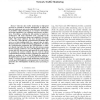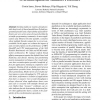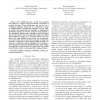IPPS
2010
IEEE
13 years 9 months ago
2010
IEEE
Automatic tuning has emerged as a solution to provide high-performance libraries for fast changing, increasingly complex computer architectures. We distinguish offline adaptation (...
IPPS
2010
IEEE
13 years 9 months ago
2010
IEEE
Line-rate data traffic monitoring in high-speed networks is essential for network management. To satisfy the line-rate requirement, one can leverage multi-core architectures to par...
IPPS
2010
IEEE
13 years 9 months ago
2010
IEEE
IPPS
2010
IEEE
13 years 9 months ago
2010
IEEE
The computational power provided by many-core graphics processing units (GPUs) has been exploited in many applications. The programming techniques currently employed on these GPUs...
IPPS
2010
IEEE
13 years 9 months ago
2010
IEEE
Abstract: Existing multicore systems already provide deep levels of thread parallelism. Hybrid programming models and composability of parallel libraries are very active areas of r...
IPPS
2010
IEEE
13 years 9 months ago
2010
IEEE
Abstract--The lag of parallel programming models and languages behind the advance of heterogeneous many-core processors has left a gap between the computational capability of moder...
IPPS
2010
IEEE
13 years 9 months ago
2010
IEEE
Abstract--The growing complexity in computer system hierarchies due to the increase in the number of cores per processor, levels of cache (some of them shared) and the number of pr...
IPPS
2010
IEEE
13 years 9 months ago
2010
IEEE
From the point of view of an operating system, a computer is managed and optimized in terms of the application programming model and the management of system resources. For the TF...
IPPS
2010
IEEE
13 years 9 months ago
2010
IEEE
With the shrinking of transistors continuing to follow Moore's Law and the non-scalability of conventional outof-order processors, multi-core systems are becoming the design ...
IPPS
2010
IEEE
13 years 9 months ago
2010
IEEE
New architectures have recently been proposed and deployed to support end-to-end advance reservation of network resources. These architectures rely on the use a centralized schedul...



